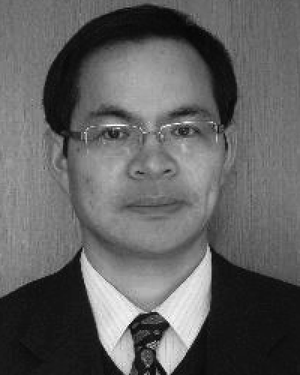| Moderator |
Professor Ge Junxiang |
Time |
September 20, 2024 15:00-16:30 |
| Address |
Electromagnetic Building 1 / F conference room |
|
|
Title of Report:Design of Higher-Performance BPFs Using Multi-Mode Dielectric Resonators for Wireless Communication Base Stations
Speaker: Professor Ma Zhewang
Report time: 14:00-16:00 September 20, 2024
Venue: Conference Room, 1st Floor, Electromagnetic Building
Moderator: Professor Ge Junxiang
About the Speaker:

Professor Ma Zhewang received his bachelor's and Master's degrees from the University of Science and Technology of China in 1981 and 1989, respectively. In September 1995, he received a Doctor's degree in engineering from National Electrical and Telecommunications University of Japan. He was assistant professor and Associate professor at National University of Electrical and Communications in 1996 and 1997, and professor at Saitama University in April 2009.
From 2014 to 2018, he successively served as deputy Director and Director of the Department of Electrical and Electronic Systems Engineering, Faculty of Engineering, Saitama University, Japan. Former Associate Editor of IEEE Transactions on MTT, Guest Associate Editor of Frontiers in Optics and Photonics, Editor-in-chief of IEICE Transactions on Electronics, et al. He has been a member and Review member of IEEE Transactions on MTT and IEEE Microwave and Wireless Components Letters Editorial Board since 1998 Member of the Board, Member of the Review Board of IEICE Transactions on Electronics, Member of the Review Board of the International Journal of RF and Microwave ComputerAided Engineering.
He has been the deputy director of the Electronic Simulation Technology Professional Committee of the Japan Institute of Electronic Information and Communication, and the member of the Microwave Professional Committee of the Japan Institute of Electronic Information and Communication. Since 1998, he has served as a member of the Steering Committee and Technical Committee of several international conferences, such as the Asia Pacific Regional Microwave Conference. Chairman of the Technical Committee of the 2008 China-Japan International Conference on Microwaves, Chairman of the General Conference of the 2011 China-Japan International Conference on Microwaves, and chairman of several international conferences.
He has been engaged in the research and development of microwave millimeter wave antennas and circuits, especially microwave millimeter passive circuits, computational electromagnetics, and measurement methods of high frequency characteristics of microwave millimeter wave dielectric materials and high temperature superconductors for many years.
Summary of report:
In recent years, the rapid development of modern wireless communication technologies has imposed more severe requirements on the RF/microwave components and circuits. High performance dielectric resonator (DR) bandpass filters (BPFs) have become essential components in many RF/microwave systems and have been receiving continuous attentions due to their many distinctive advantages like low loss, small size, light weight, and temperaturestable property. In particular, multi-mode DRs are preferred because they can further reduce both the size and weight of BPFs. However, due to the complicated field distributions in multi-mode DRs, accurate design of BPFs using multi-mode DRs is still a challenging work.
This lecture reviews our recent works on the accurate design of high-performance BPFs using multi-mode DRs for future applications in wireless communication base stations. It includes three parts. In Part I, a precise design method of high-order BPFs with complicated coupling topologies is developed, and an example design of an 11-pole TM010 DR BPF is provided. In Part II, novel combined coaxial and dual-mode DR BPFs are precisely designed with fully controllable TZs, and symmetrical or asymmetrical filter responses are realized with excellent satisfactions of design specifications. In Part III, a novel compact high-performance 11-pole BPF is developed by using two triple-mode DRs and five coaxial TEM-mode resonators. The designed 11-pole DR BPF provides the advantages of reduced size and weight, low-profile, high frequency selectivity, fully controllable bandwidth and TZs, and excellent spurious performance. All the designs of the multi-mode DR BPFs meet the design specifications quite well, and are approved well by measured responses which agree excellently with their theoretical predictions.
Welcome teachers and students to participate!
School of Electronic and Information Engineering
September 12, 2024
